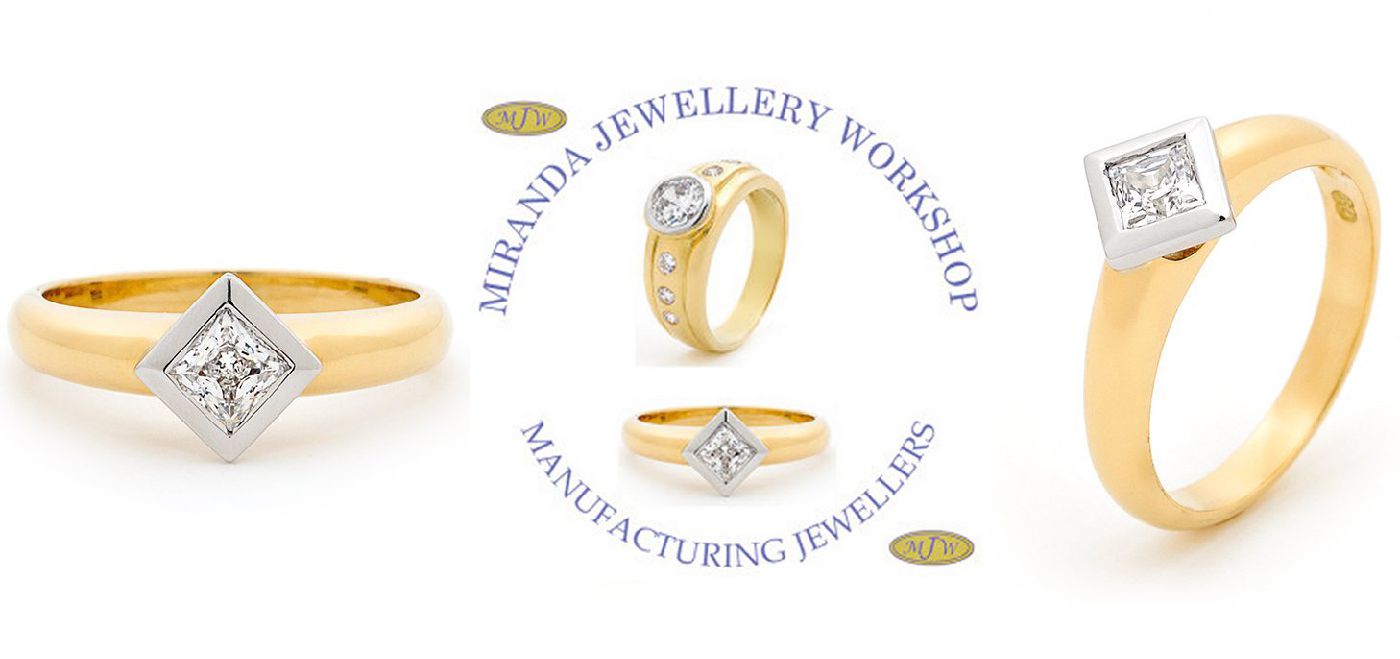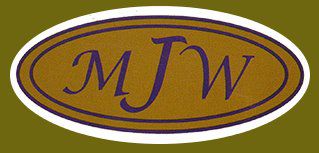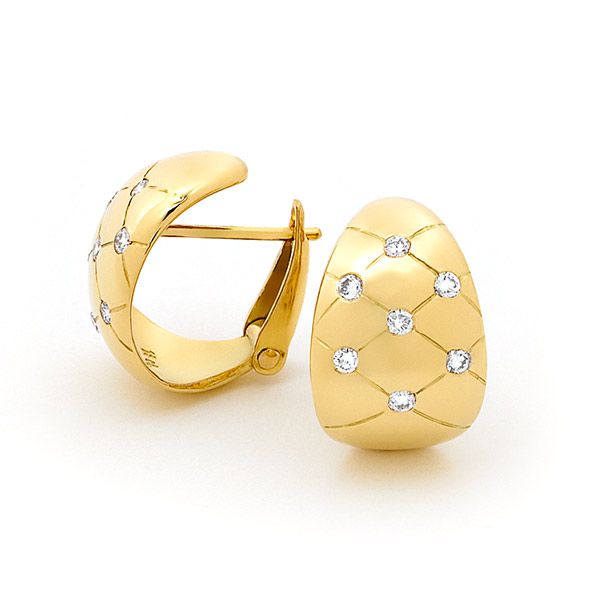
Be familiar with the terms that you'll be confronted with when shopping for a ring. Giving the impression that you know what you're looking for will increase your confidence and help you to ward off any disreputable ring sellers. Here are some of the terms to be familiar with:
Band: The band is the circular part of the ring that sits around the finger. It's usually made from gold, silver, or platinum, although it can be made from some other combination of metals. Gold is yellow-orange in its natural state and is normally alloyed with another metal for durability. Some prefer the lighter yellow color of less-pure gold such as 14K or 10K. "White gold" is gold alloyed with metals purposely to give the mixture an off-white color and must be plated with another metal--rhodium is common--for a bright silvery appearance. The plating wears off; some jewelers will replate their rings from time to time for free. Platinum is hard, strong and naturally silvery but will dull slightly from a mirror finish over time with wear, which is not necessarily a problem. Since a gold setting will make a diamond look very slightly yellowish, it is a waste of money to buy a very high color grade diamond to put in it.
Setting: The setting refers to the piece that holds the gemstone in place, which is attached to the band. The setting can be "pronged" or "invisible".[1] Some rings combine a platinum setting with a gold band for the special background color of gold and the contrast, lack of diamond-tinting, and strength of platinum. A setting with a bezel, or at least six prongs for some redundancy, can be safer for a ring that is likely to be worn during significant activity.
Gemstone: The gemstone is the feature piece of the ring, usually a diamond. Occasionally, this is facetiously referred to as a "rock". The bigger the stone, the better according to many, although it's more important to go with your girlfriend's personality and preferences rather than assuming this. The gemstone doesn't have to be a diamond (see below) but reasons for deviating from this should be good ones!
The C's4 : These are the carat, color, clarity and cut of the gemstone (usually a diamond).
The 5th C: Cost. A cubic zirconia can be beautiful and indistinguishable from a diamond only by a jeweler or other expert. It is softer than a real diamond so it may dull over the years. Lab Diamonds are another great alternative to traditional diamonds. Generally cost 5-10% of what a traditional diamond would, and looking just a beautiful, they definitely deserve some research. A rhodium-plated silver ring can be indistinguishable (except for the identifying mark an honest seller should put on the inside) from a rhodium-plated white-gold one. These can be a good option for a couple with little money up front. An alternative is a smallish real diamond (the price goes up very fast with size, so a very nice one of less than a half-carat, whose face area will be more than half of that of a one-carat diamond, will be a few hundred dollars) in a simple real gold ring.
What is the meaning of a ring's shape and composition?
The wedding ring is the last present a couple will give one another before their wedding. The very first present a couple gives each other is often times a sort of promise ring - which most think of a pre-engagement ring. Later on as a duet gets more involved, they then give engagement rings to each other.
Most couples cherish the instant when they slip a ring on their beloved. They gaze with enchantment in their eyes during that instant when the ring is put on their finger and they understand that they will be together from then on. What almost all don't imagine is that this has been taking place for years and revolves around the giving of wedding rings. The implication and symbolization behind wedding bands is rich and as complicated as its own love story. It should be told so that couples understand exactly why they exchange wedding rings.
This wedding ring is an emblem and throughout time has symbolized love, devotion and even an agreement between families. The physical structure of the wedding ring has changed as different civilizations have changed it to look more and more beautiful. Some materials are more dear like precious metals and are considered to be of greater value - hence might mean more. However the meaning behind the symbol has stayed the same throughout time and over continents. "I love you" "I wish to be with you forever" and "You are mine."
A ring in its simplest form is a circle, which means 'forever.' What more could couples need than the unclouded wish to spend all time together? Many couples opt to have a romantic phrase engraved within their wedding rings. This makes that traditional symbolism even more important for each couple.
Symbols exist throughout our culture. Even the materials the wedding ring is created out of appear to be symbols of love and devotion. A great deal of couples select diamonds on their wedding rings; diamonds are literally indestructibleand are the "forever" stone you want to select to epitomize your love. Rubies are another choice representing love, keenness and grandeur. While the wedding ring itself is seen as invaluable, the metaphor of the wedding ring symbolizes that your betrothed is precious to you.
The wedding ring was adorned in past times like it is presently, on the left hand, third finger. The reason being because of the strong-held belief that the vein in this finger moves at once from the heart. This notion was endorsed as ladies commenced wearing their wedding rings closer to their hand and then their engagement ring on that same hand - affirming this notion of it being so close to your heart.
Wedding rings have been worn in many cultures. While the traditions may be slightly different, the sentiment and meaning to love, treasure and honor one another forever, remains much the same.


CONTACTS
Cast your dreams into reality
By Appointment only
Call us: (02) 9531 2678
Website design by
www.seeit.com.au
SHARE THIS PAGE!